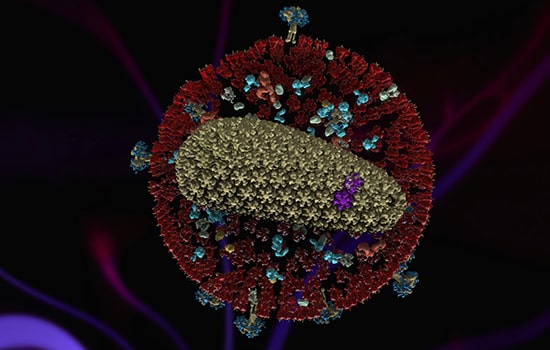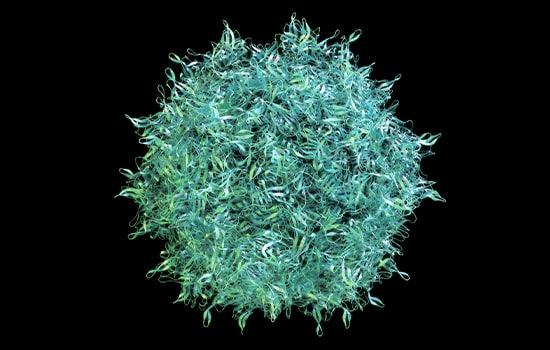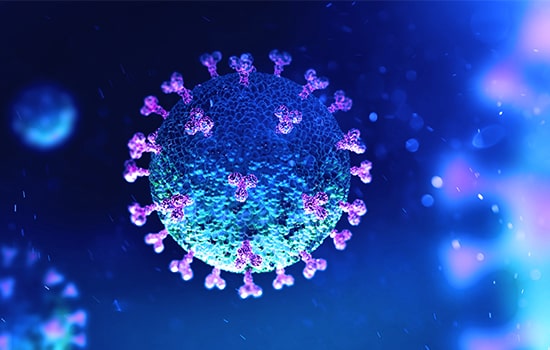Applications
Integrative Viral Vectors
Definition of viral vector
Gene therapy is the treatment of a genetic disease by the introduction of specific cell function-altering genetic material into a patient. The key step in gene therapy is efficient gene delivery to the tissue or cell target, which is carried out by gene delivery vehicles called vectors. Virus can be beneficial as the vector for gene therapy.
Viral vectors are defined as the viruses which have the ability to change the host cell's genetic code and produce gene delivery tools. Viral vectors can be divided into two types, integrative and non-integrative vectors. Most vectors require the presence of specific receptors on the cell surface. After binding to the receptors, the content of the viral capsid is released into the cytoplasm. In the case of integrating vectors, viral DNA translocates into the nucleus and integrates into the host genome. The genetic material of non-integrating vectors, in contrast, remains in the cytoplasm in an episomal form.
Viral vectors may produce tumor antigens which are proteins found on a tumor cell to stimulate an antitumor immune response in the body. Viral vectors may also be used to carry genes that can change cancer cells back to normal cells.

Long-term expression of the therapeutic gene is guaranteed due to the ability of these viral vectors to integrate into the genome of host cells.
Integrative viral vectors
What are integrating viral vectors?
Integrating viral vectors such as lentivirus and gamma retrovirus vectors, are viruses which are integrated into a cell's genome and produce gene delivery tools. These vectors are often characterized by stable and long-term expression of the transgene. Genetic integration does not guarantee stable expression as transgene expression can be gradually silenced over time. Integrating viral vectors are preferred in applications where stable genetic modification needs to be maintained in dividing cells.
Integrating viral vectors application
Integrating viral vectors are beneficial when used as vehicles for gene therapy. Chimeric antigen receptor (CAR) T cell or CAR T therapies such as Kymriah™ (Lentivirus vector) and Yescarta™ (Gammaretrovirus vectors) for certain types of blood cancers are commercially available. This therapy is integrating vectors which use ex vivo to modify T-cells. CAR T cell therapy has shown promising results for the treatment of blood cancers, particularly CD19 positive B cell malignancies with three products, Tisagenlecleucel (Kymriah), Axicabtagene ciloleucel (Yescarta) and most recently Brexucabtagene Autoleucel (Tecartus) obtaining market authorisation. The drawback with integrative viral vectors is safety-related, e.g. activation of oncogenesis in some applications.
Type of integrating viral vector
Some types of integrating vectors are developed already in laboratories for research and clinical study. There are lentivirus, adeno-associated virus, and retroviral virus.

Lentivirus
Lentiviruses are non-oncogenic retroviruses that produce multi-organ diseases characterized by long incubation periods and persistent infection. There are five (5) serotypes recognized, based upon the mammalian hosts with which they are associated: Bovine, Equine, Feline, Ovine/Caprine, and Primate. Lentivirus are viruses of the Retroviridae family that help scientists to :
- stably overexpress or silence genes
- immunize against a range of diseases
- generate transgenic organisms
Lentivirus represents a genus of slow viruses with long incubation period (months, even years) and a propensity to induce a wide range of pathologies in different animal species. Due to their rather flexible genome and a potential of transducing many forms of nondividing cells, lentiviruses have become one of the most widely used vectors for gene transfer.
According to the recent classification of International Committee on Taxonomy of Viruses (ICTV), Lentivirus genus belongs to the family Retroviridae and currently comprises nine species: seven animal lentiviruses and two human lentiviruses.
Animal lentiviruses are bovine immunodeficiency virus (BIV), caprine arthritis encephalitis virus (CAEV), equine infectious anemia virus (EIAV), feline immunodeficiency virus (FIV), puma lentivirus (PLV), simian immunodeficiency virus (SIV) and visna/maedi virus (VMV). Human species are well-known for human immunodeficiency virus 1 (HIV-1) and human immunodeficiency virus 2 (HIV-2).
Lentivirus history and characteristics
The first actual description of a disease caused by a lentiviral agent came from the observation of the equine infectious anemia in France in 1843. Later, a slowly progressive disorder in sheep was noted in Iceland during the 1950s caused by VMV, which represented a severe form of pneumo-encephalopathy. In the 1960s, American researchers determined the etiology of leukemia and lymphosarcoma of cattle – the causative factor was a retrovirus (BIV), morphologically similar to VMV.
Several lineages of closely related human and simian immunodeficiency viruses (HIV and SIV, respectively) are found in primates, which can both result in the acquired immunodeficiency syndrome (AIDS). Simian immunodeficiency viruses are branching into the five additional lineages which are named according to their host; those are African green monkey, chimpanzee, sooty mangabey, syke and mandrill SIVs.
Lentiviral vectors are enveloped particles of 80-100 nm that are usually used for functional genomics, ex vivo and in vivo gene therapy, and biological research. They are suitable for many applications due to their ability to successfully target cells and integrate into the host genome.

Adeno-Associated Viruses
Adenoviruses are non-enveloped, icosahedral, viruses with a linear, double-stranded DNA genome of approximately 36kb with a lytic infection cycle. There are 57 immunologically distinct types of adenovirus that can cause human infection. Characterized by their replication incompetency, cell tropism (determined by capsid serotype), and low immunogenicity, AAVs are non-pathogenic human parvoviruses that are of great interest to gene therapy.
Adeno-associated virus is one of the smallest encapsulated viruses discovered with a diameter of roughly 22 nm. The advantage of using AAV as a viral vector is promising due to its ability to infect both dividing and quiescent cells and its genetic material to be delivered into a wide range of cell types. Its long-term expression in nondividing cells is favorable for use in gene therapy.
First generation adenoviral vectors result from the deletion of the E1 region. The 1st generation adenoviral vectors can be packaged using HEK293 or PER.C6 cell lines which stably express the viral E1A and E1B proteins. Second generation adenoviral vectors have additional deletions of E2 and/or E4 function. Deletion of the adenoviral E3 gene accommodates increased transgene packaging (>8 Kb). Contrary to integrative viral vectors, adenoviral genomes reside episomally in the host nucleus. This mitigates the risk of insertional mutagenesis, but results in transient transgene expression.

Retroviral Vectors
Retroviruses are RNA viruses that replicate through an integrated DNA intermediate. Based on their genome structures, retroviruses are classified into simple and complex retroviruses. Simple and complex retroviruses encode Gag (group-specific antigen), Pro (protease), Pol (polymerase), and Env (envelope) genes. In addition to these genes, complex retroviruses also encode several accessory genes.
Cancer gene therapy commonly uses retroviral vectors since its pathological genes are removed and large-scale manufacturing for clinical use is possible. All protein-coding sequences in the RT vector are replaced with a therapeutic gene of interest but still carry out essential sequences. This means that they are replication deficient and that viral proteins needed for infection are produced by the packing cell line. Cell lines easily can expand by bioreactor system to provide sufficient amounts of viral proteins in order for clinical use.
Currently, all three types of viruses are being exploited as gene therapy tools. Common examples of each type include:
- Lentiviruses: Human Immunodeficiency virus 1 (HIV-1)
- Oncoviruses: Gammaretroviruses, including murine leukemia virus (MLV)-based retrovirus vectors
- Spumaviruses: Simian Foamy Virus (SFV)
Sources:
- National Cancer Institute. 2023. https://www.cancer.gov/publications/dictionaries/cancer-terms/def/viral-vector. 1 page
- Jote T. Bulcha, Yi Wang, Hong Ma, Phillip W. L. Tai. 2021. Viral vector platforms within the gene therapy landscape. https://www.nature.com/articles/s41392-021-00487-6. Article number: 53 (2021)
- Biovan. 2021. Viral Vector and gene therapy basics summarized. https://biovian.com/news/viral-vector-and-gene-therapy-basics-summarized/#:~:text=Integrating%20Viral%20Vectors%2C%20such%20as,term%20expression%20of%20the%20transgene. 1 page
- By Dr. Tomislav Meštrović, MD, Ph.D. 2018. What is Lentivirus. https://www.news-medical.net/life-sciences/What-is-Lentivirus.aspx. 1 page
- Roman P. Labbé, Sandrine Vessillier, Qasim A. Rafiq. 2021. Lentiviral Vectors for T Cell Engineering: Clinical Applications, Bioprocessing and Future Perspectives. https://www.ncbi.nlm.nih.gov/pmc/articles/PMC8402758/. 13(8): 1528.
- Environmental Health and Safety University of Florida. 2021. Viral Vector https://www.ehs.ufl.edu/wp-content/uploads/2021/06/Viral-Vector-Fact-Sheet_210428-2.pdf. 17 pages





